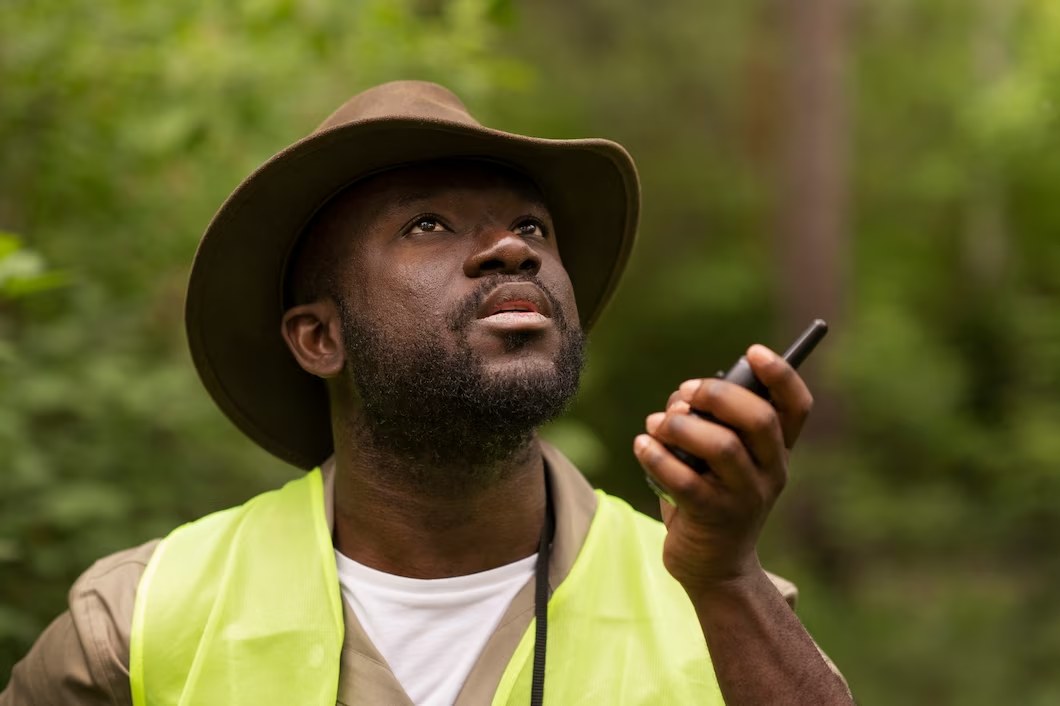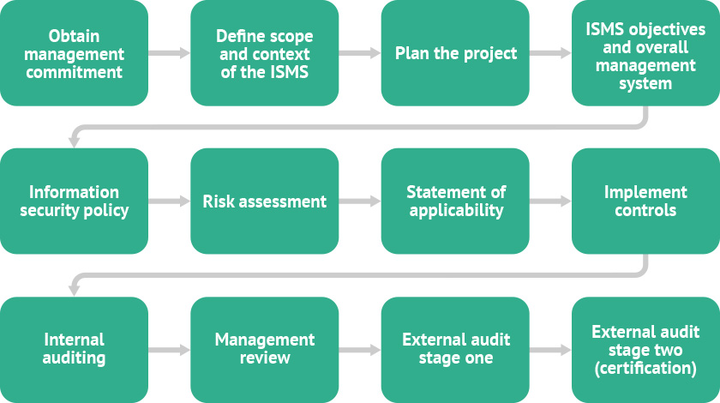Lot 118, Lane 1, 1st Avenue, Gwarimpa Estate, Abuja - Nigeria
Now Hiring: Are you a driven and motivated 1st Line IT Support Engineer?

Lot 118, Lane 1, 1st Avenue, Gwarimpa Estate, Abuja - Nigeria
Now Hiring: Are you a driven and motivated 1st Line IT Support Engineer?

JB Farms
Networking Infrastructure Setup
08 August, 2019
Outline:
1. Introduction
2. The Importance of Effective Communication on an Oil Palm Plantation
3. Assessing the Communication Needs and Challenges
4. Step 1: Planning the Walkie-Talkie Installation Project
- Identifying Communication Zones and Coverage Requirements
- Determining the Number of Walkie-Talkies Needed
- Selecting Suitable Walkie-Talkie Models
5. Step 2: Designing the Walkie-Talkie Network Infrastructure
- Establishing Base Stations and Repeaters
- Installing Antennas and Cables
- Testing Signal Strength and Coverage
6. Step 3: Walkie-Talkie Deployment and Training
- Distributing Walkie-Talkies to Personnel
- Conducting Training on Proper Usage and Etiquette
7. Step 4: Monitoring and Maintenance
- Regular Testing and Maintenance of Equipment
- Monitoring Signal Quality and Coverage
8. Benefits of the Walkie-Talkie Installation Project
- Improved Communication and Coordination
- Enhanced Safety and Efficiency
- Time and Cost Savings
9. Conclusion
10. FAQs (Frequently Asked Questions)
1. Can walkie-talkies work effectively in a dense forested area?
2. How far can walkie-talkies communicate on an oil palm plantation?
3. What factors should be considered when selecting walkie-talkie models?
4. Is it necessary to obtain licenses for walkie-talkie usage?
5. Can walkie-talkies be used in adverse weather conditions?
Walkie-Talkie Installation Project on a 10,000m2 Oil Palm Plantation
Introduction
Effective communication is crucial for the smooth operation and coordination of activities on an oil palm plantation. With vast areas to cover and various teams working across the plantation, a reliable communication system is essential. This article outlines the steps involved in a walkie-talkie installation project on a 10,000m2 oil palm plantation, focusing on planning, design, deployment, and maintenance.
The Importance of Effective Communication on an Oil Palm Plantation
On an oil palm plantation, communication plays a vital role in ensuring efficient coordination among various teams, such as harvesters, supervisors, and security personnel. Timely and clear communication helps in addressing operational challenges, coordinating tasks, and ensuring the safety of workers. However, the expansive nature of the plantation poses communication challenges that need to be addressed with a robust solution.
Assessing the Communication Needs and Challenges
Before embarking on the walkie-talkie installation project, it is crucial to assess the specific communication needs and challenges of the oil palm plantation. Factors such as the plantation's size, terrain, and potential obstacles should be considered to determine the scope of the project and select the appropriate equipment.
Step 1: Planning the Walkie-Talkie Installation Project
The first step is to carefully plan the walkie-talkie installation project. This involves:
Identifying Communication Zones and Coverage Requirements
Divide the plantation into communication zones based on proximity and operational needs. Identify areas that require constant communication, such as harvesting sites, processing areas, and security posts. Determine the coverage requirements within each zone to ensure seamless communication.
Determining the Number of Walkie-Talkies Needed
Assess the number of personnel in each communication zone and their communication needs. Calculate the optimal number of walkie-talkies required to facilitate effective communication among the teams. Consider factors such as shift patterns, equipment sharing, and emergency response requirements.
Selecting Suitable Walkie-Talkie Models
Choose walkie-talkie models that meet the plantation's communication requirements. Consider features such as range, battery life, durability, and noise cancellation capabilities. Select models with sufficient coverage range to ensure communication across the plantation.
Step 2: Designing the Walkie-Talkie Network Infrastructure
Designing a robust network infrastructure is crucial for optimal walkie-talkie performance. This involves:
Establishing Base Stations and Repeaters
Identify strategic locations for base stations and repeaters to extend the coverage range. Base stations act as central communication hubs, while repeaters amplify signals to overcome obstacles and ensure coverage across the plantation. Install the necessary infrastructure, including antennas, cables, and power supply, to support these devices.
Installing Antennas and Cables
Strategically position antennas to optimize signal transmission and reception. Consider the plantation's topography, obstacles, and potential interference sources. Install high-quality cables to minimize signal loss and ensure reliable communication.
Testing Signal Strength and Coverage
Conduct comprehensive signal strength tests to ensure adequate coverage across the plantation. Identify any weak spots or areas with signal interference and make necessary adjustments, such as repositioning antennas or adding repeaters, to improve coverage and communication reliability.
Step 3: Walkie-Talkie Deployment and Training
Once the network infrastructure is in place, proceed with walkie-talkie deployment and training. This involves:
Distributing Walkie-Talkies to Personnel
Ensure each team member receives a designated walkie-talkie. Provide clear instructions on usage, channel selection, and emergency protocols. Assign responsibilities for equipment care and maintenance to promote longevity and proper functioning.
Conducting Training on Proper Usage and Etiquette
Organize training sessions to familiarize personnel with walkie-talkie usage and etiquette. Train them on channel selection, voice clarity, volume control, and proper radio procedures. Emphasize the importance of clear and concise communication to avoid confusion and ensure effective coordination.
Step 4: Monitoring and Maintenance
Maintaining the walkie-talkie system is essential for uninterrupted communication. Implement the following practices:
Regular Testing and Maintenance of Equipment
Schedule regular inspections and maintenance of walkie-talkies, base stations, and repeaters. Check for any hardware issues, battery performance, and software updates. Conduct periodic testing to verify signal strength, clarity, and coverage.
Monitoring Signal Quality and Coverage
Establish a system for monitoring signal quality and coverage across the plantation. Keep track of any signal issues or dead zones and promptly address them. Regularly evaluate the walkie-talkie system's performance and make necessary adjustments to optimize communication.
Benefits of the Walkie-Talkie Installation Project
The walkie-talkie installation project brings several benefits to the oil palm plantation:
Improved Communication and Coordination
The walkie-talkie system facilitates real-time communication, enabling swift coordination among different teams and departments. It enhances operational efficiency, reduces delays, and promotes smooth workflow across the plantation.
Enhanced Safety and Efficiency
Clear and instant communication through walkie-talkies enhances safety measures on the oil palm plantation. Personnel can quickly report emergencies, potential hazards, or any unusual incidents. Prompt response and effective coordination contribute to a safer working environment.
Time and Cost Savings
The walkie-talkie system streamlines communication processes, reducing the need for time-consuming physical meetings or inefficient communication methods. It eliminates the reliance on mobile phone networks, minimizing communication costs for the plantation.
FAQs (Frequently Asked Questions)
1. Can walkie-talkies work effectively in a dense forested area?
- Walkie-talkies can work effectively in dense forested areas, although the range may be affected by vegetation and obstacles. Proper positioning of base stations and repeaters can help overcome signal challenges.
2. How far can walkie-talkies communicate on an oil palm plantation?
- The communication range of walkie-talkies depends on various factors, including terrain, interference, and walkie-talkie capabilities. In an open area, the range can extend several kilometers, but it may be shorter in a dense plantation environment.
3. What factors should be considered when selecting walkie-talkie models?
- When selecting walkie-talkie models, consider factors such as range, battery life, durability, noise cancellation, and ease of use. Assess the specific communication needs and environmental conditions of the oil palm plantation to choose suitable models.
4. Is it necessary to obtain licenses for walkie-talkie usage?
- The requirement for licenses may vary depending on the country and regulations. It is essential to check with the local authorities regarding licensing requirements for walkie-talkie usage.
5. Can walkie-talkies be used in adverse weather conditions?
- Walkie-talkies are designed to withstand various weather conditions. However, severe weather conditions such as heavy rain, thunderstorms, or extreme temperatures may affect signal quality and range. It is recommended to take necessary precautions during adverse weather situations.
Conclusion
The installation of a walkie-talkie system on a 10,000m2 oil palm plantation enhances communication, coordination, and safety among personnel. Proper planning, design, deployment, and maintenance ensure optimal performance and coverage across the plantation. With reliable communication, the plantation can improve operational efficiency, address challenges promptly, and foster a safer and more productive work environment.


